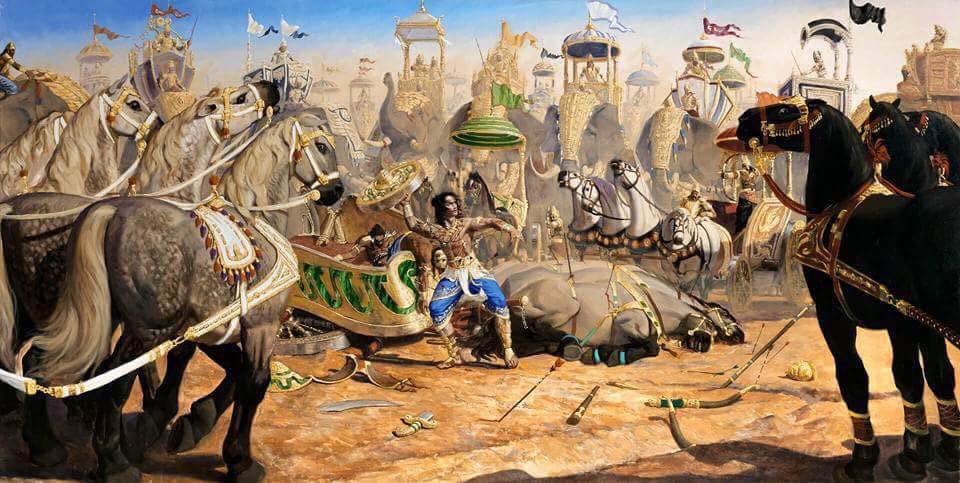drawing the ancient Indian epic, the Mahabharata, using Italian Renaissance era influences | paintings by Giampaolo Tomasetti — he drew 23 large sized paintings which is now housed in Florence, Italy.
[a thread with a few of those paintings]

[a thread with a few of those paintings]


The four Pandava brothers and their wife Draupadi (on Bhima’s shoulders) head to the peak of the Gandhamadana mountains to await the arrival of Arjuna from the Heavens, who had gone to wage war against the Nivatakavachas on behalf of the Gods.
Oil on Canvas, 100 x 70 cm

Oil on Canvas, 100 x 70 cm


Strange Charioteer, Oil on Canvas, 200 x 250 cm
[the ‘abduction’ of Subhadra, who takes over the reins of the chariot so that Arjuna may repel the attacks of her kinsmen who want to ‘save’ her]
[the ‘abduction’ of Subhadra, who takes over the reins of the chariot so that Arjuna may repel the attacks of her kinsmen who want to ‘save’ her]

The Choice, Oil on Canvas, 180 x 230 cm
[Krishna wakes up to find Arjuna by his feet and Duryodhana by his headstand, both have come to seek Krishna’s alliance in the war to come, Krishna offers Arjuna an opportunity to choose: Krishna or Krishna’s army of many million soldiers]

[Krishna wakes up to find Arjuna by his feet and Duryodhana by his headstand, both have come to seek Krishna’s alliance in the war to come, Krishna offers Arjuna an opportunity to choose: Krishna or Krishna’s army of many million soldiers]


Giampaolo Tomassetti, was born on March 8, 1955, in Terni, Italy. One of his great loves is painting frescoes and walls. He worked on the Mahabharata project for the last twelve years in Città di Castello, Perugia, Italy. [my respects] 

• • •
Missing some Tweet in this thread? You can try to
force a refresh




















































